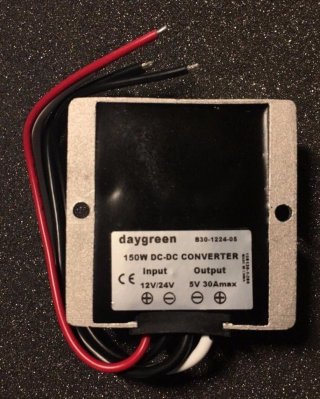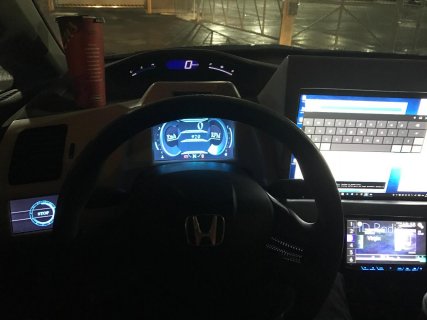BabySpinach
Active member
Hello all,
I've been working on a project for about 5 months now that centers around a teensy 3.6. It's an automotive dashboard display. It reads pins via optoisolators and displays everything to dual RA8875 controllers. I have a bench PSU and test setup along with the following power regulation:
One 5v switching regulator 24V input 1A, and one 3.3V switching regulator (the 8 dollar ones from digikey) with manufacturer recommended filters, 15V TVS protection diode, Schottky diode for reverse current protection. All of the digital inputs are behind optoisolators, with no direct connection to any teensy pin, except for a single Analog level shifter that is protected by a 3.3v Zener.
When testing with 12-14V on the bench, the screens turn on and everything works as expected. This has been working since the beginning with no issues.
I attempted to plug in the module into the harness I created in the vehicle, turned the key (and the screen began to boot) and immediately turned on the engine (which restarts the teensy for a second time), the displays flashed for a very short moment, and nothing happened! The teensy now appears to be dead! I've checked all power sources and 5v is at the input, the teensy just doesn't blink or do anything. It's no longer showing up at all as a COM device. I can't get it to do anything.. I have a USB cable I use for uploading with a clipped 5V wire. Even with external teensy power to the VIN, this cable doesn't work. With a direct 5v powered cable, there is still no teensy life.
Do I need a long delay when booting anything that reads from a SD card and loads SPI? Unless there's something obvious I'm overlooking, I think I'll need to buy another Teensy.. I'd like to not fry the next one. Is there something I need to do to prevent this??
I've attached the setup and loop code.
I've been working on a project for about 5 months now that centers around a teensy 3.6. It's an automotive dashboard display. It reads pins via optoisolators and displays everything to dual RA8875 controllers. I have a bench PSU and test setup along with the following power regulation:
One 5v switching regulator 24V input 1A, and one 3.3V switching regulator (the 8 dollar ones from digikey) with manufacturer recommended filters, 15V TVS protection diode, Schottky diode for reverse current protection. All of the digital inputs are behind optoisolators, with no direct connection to any teensy pin, except for a single Analog level shifter that is protected by a 3.3v Zener.
When testing with 12-14V on the bench, the screens turn on and everything works as expected. This has been working since the beginning with no issues.
I attempted to plug in the module into the harness I created in the vehicle, turned the key (and the screen began to boot) and immediately turned on the engine (which restarts the teensy for a second time), the displays flashed for a very short moment, and nothing happened! The teensy now appears to be dead! I've checked all power sources and 5v is at the input, the teensy just doesn't blink or do anything. It's no longer showing up at all as a COM device. I can't get it to do anything.. I have a USB cable I use for uploading with a clipped 5V wire. Even with external teensy power to the VIN, this cable doesn't work. With a direct 5v powered cable, there is still no teensy life.
Do I need a long delay when booting anything that reads from a SD card and loads SPI? Unless there's something obvious I'm overlooking, I think I'll need to buy another Teensy.. I'd like to not fry the next one. Is there something I need to do to prevent this??
I've attached the setup and loop code.



